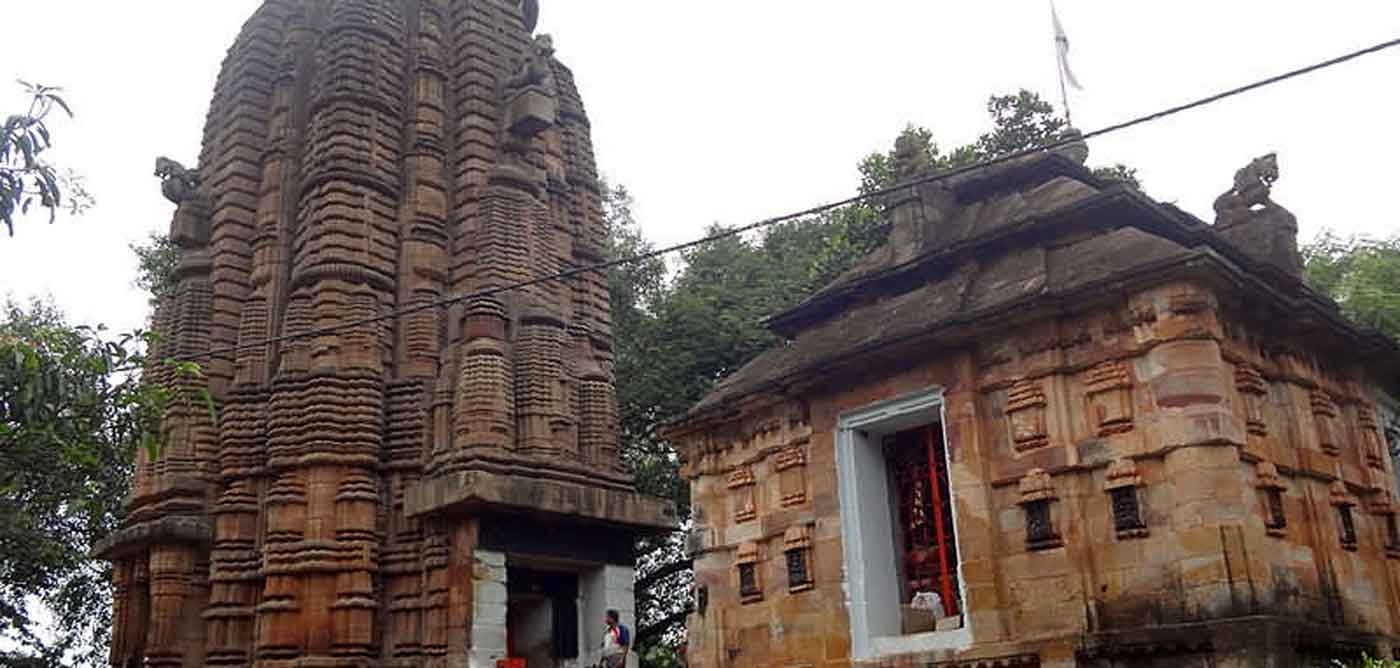
The Rameshwar temple is very old temple in Bhubaneswar and known as the Mausi Maa temple of Lingaraj Temple. It is located from 2 km distance from Lingaraj shrine.
Legend goes as when Rama was returning from Lanka after victory over Ravana, Goddess Sita asked to worship Shiva here. So Ramachandra built a Linga for that purpose. Traditionally during Ashokashtami, which falls one day before to Rama Navami in Chaitra Lord Lingaraja comes to this temple by a large chariot called Rukuna Rath and stays for four days. Historically the temple dates back to 9th century.
Built of sandstone and facing east, architectually the temple is considered at the transitional phase of the Kalinga school of architecture, and is within the rekha deula category of Kalinga temples.
The temple itself consists of a single hall with a tiered Shikhara in the typical Orissan “beehive” shape that I was going to see a lot of over the subsequent days. The hall contains the main deity, a Shiva Lingam, made of black chlorite. As I was to discover over the next few days, almost all the old temples in Bhubaneswar are dedicated to Lord Shiva. Within the sanctum sanctorum there is an image of the Goddess Durga, but during my visit the temple was quite busy with devotees, so I decided not to enter and intrude on proceedings.
The temple is decorated with some, but not many, intricate sculptures on the 16 pillars and recesses present outside the temple. The carvings include a few Vyalas, but also notably some amorous couples that almost all literature regarding this temple seem to have omitted.
As is often the case with old temples in India, Rameshwar Temple is associated with myths and legends. The temple’s name is associated with the legend of Lord Rama, and it is said that Lord Rama along with his wife Sita stopped here on their way to Ayodhya after his victory over Ravana. At this exact location, Sita requested Lord Rama to stop and she expressed a desire to offer prayers to Lord Shiva. To fulfill the wishes of his wife, Lord Ram built the lingam, and hence the name Rameswara has been attached to the this temple.
The temple is also known by another name, the ‘Mausi Maa’ temple (maternal aunt of Lord Lingaraj). Rukuna Rath Jatra is a major festival observed at the temple every year during the month of March/April (8th day on the month of Chaitra), where Lord Lingaraj (who is represented by a bronze statue of Chandrashekhar), along with Rukmini and Basudeva are taken to Rameshwar Temple from the Lingaraj Temple in a highly colourful procession.
The festival is also known as Ashokastami, and the deities stay in the Rameshwar temple for four days before returning to their home, the Lingaraja temple, on the fifth day. The festival is called Analeuta Ratha Jatra because the chariot doesn’t take a turn along its journey, and indeed from Lingaraj Temple you can see on Google Maps that there is more or less a direct route to the Rameshwar Temple.
The temple’s surroundings were surprisingly green, the ASI have clearly decided to pay this site a little attantion and it does show. Unfortunately the large tank with stepped sides behind the temple (to the west) has largely been abandoned. This is a great shame, and a missed opportunity I feel. If the tank was renovated and considered part of the temple site proper, it would greatly enhance the overall experience and offer a lovely space for locals and tourists to visit.